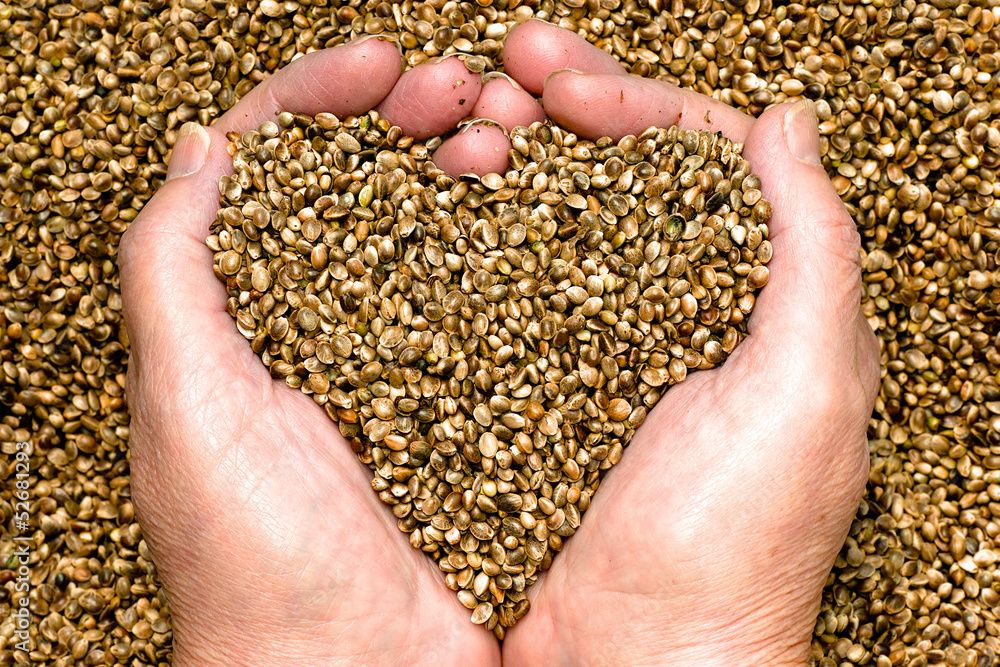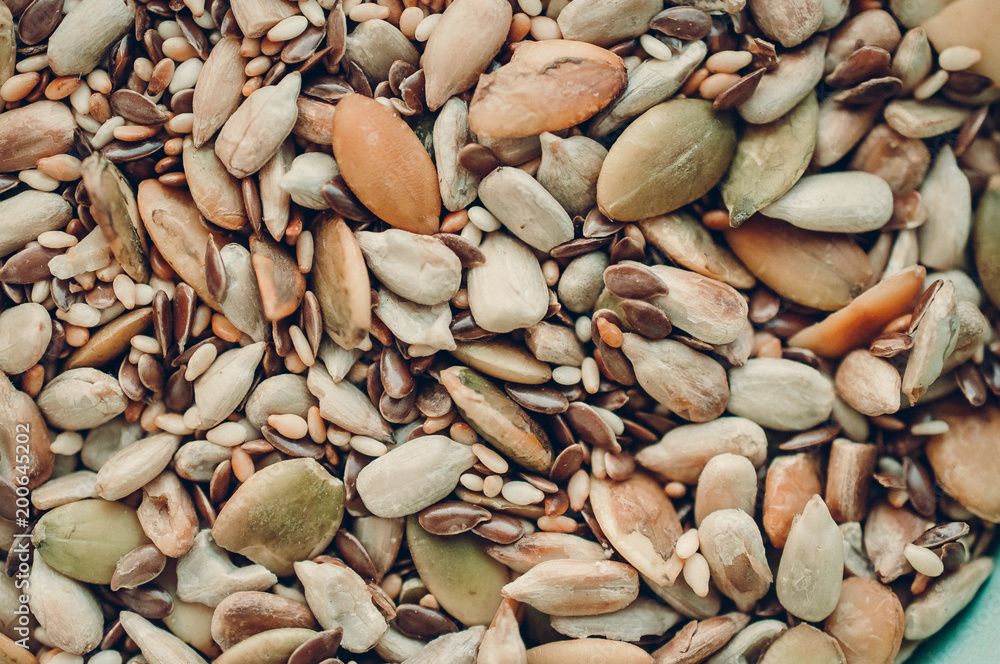Can Seed Cycling Ease Menstrual Cycle Symptoms?
Hilary Miller, ND
Can Seed Cycling Ease Menstrual Cycle Symptoms?
by Hilary Miller, ND
One of the most common reasons women test their hormones is due to “period problems”. They may be irregular, painful, or heavy. They may have PMS or fatigue at different times in their cycle. They may just want to make sure their hormones are “normal”. And many women are looking for gentle, natural support. One technique that is discussed in the field of functional medicine is seed cycling.
What is Seed Cycling?

Seed cycling is the practice of consuming ground seeds in two, 2-week phases. The first phase uses flax and pumpkin seeds, and the second uses sesame and sunflower seeds. The phases are timed according to the two menstrual cycle phases: follicular and luteal. The follicular phase is characterized by higher estrogen and the luteal phase is progesterone dominant. Ground seeds are believed to support the dominant hormones of each phase.
Seed Cycling and Hormone Production
Seeds have been rumored to provide the steroid backbone for the estrogen and progesterone made in the ovaries, but this is not true; hormones are made from circulating cholesterol 1 , not dietary fats. Some of the nutrients found in seeds play a role in the production of estrogen and progesterone, but there is no solid evidence that seed cycling helps balance hormones. The practice has not been studied, so whether it works for the wide variety of complaints it claims to help is unclear.
Nevertheless, there are several research-backed reasons why seed cycling might have an effect for some women:
Beneficial Omega-6 Fatty Acids, More Specifically Linoleic Acid, are Found in Seeds [2-5]
These fats convert into GLA and DGLA which help build prostaglandins and are essential for ovulation. Prostaglandins (PGEs 1 and 2) modulate inflammation, which may lower cramping, fatigue, and moodiness. Low PGE1 contributes to menstrual irregularity, menstrual cramps, premenstrual dysphoria, and moodiness. Excess of pro-inflammatory PGE2, which competes with PGE1, may also cause these issues. In either case, tipping the dietary balance towards anti-inflammatory fats and PGE1 by taking seeds may help lower inflammation and promote more regular ovulation.
Seeds Provide Phytoestrogenic Lignans [3, 6-13]
Phytoestrogens are plant steroids that look like and act like weak estrogens in the body. They may also block stronger estrogens from acting at the receptor. Phytoestrogens may improve hormone symptoms caused by high or low estrogen. Flaxseed and sunflower seeds provide the most phytoestrogenic lignan content.
Flaxseed consumption has been shown to reduce anovulatory cycles and improve progesterone production by increasing ovulation regularity. Flaxseeds may slightly increase the length of the luteal phase, which is often seen as reflecting healthier progesterone levels. Flax is also beneficial in inducing CYP1A1, an enzyme that promotes healthy phase 1 estrogen detox in the liver.
Flaxseeds can also increase sex hormone-binding globulin (SHBG), a protein that binds and deactivates estrogen and androgens. When these hormones are too high, they can interfere with cycle regularity and increase negative period symptoms like pain and heavy bleeding. By raising SHBG, flaxseed may lower estrogen (counter to the theory that the seeds are used to make hormones). This may be why it appears to have more evidence in reducing symptoms of high hormones in cycling women, such as breast tenderness [ 3] .
Flax, Pumpkin, Sesame, and Sunflower Seeds Contain Hormone-Balancing Nutrients [3, 5, 11, 13, 14]
In addition to providing essential fatty acids and lignans, the seeds used in seed cycling are great sources of the following hormone-balancing nutrients:
- Zinc: Pumpkin, sunflower, and flaxseeds are great sources of zinc, a nutrient necessary for ovulation by promoting follicle stimulating and luteinizing hormone release. Zinc may also reduce menstrual cramps.
- Selenium: Selenium may increase progesterone production. Low progesterone is thought to be the cause of many menstrual cycle woes. Research on selenium and hormones is mostly in animals, especially cows, but some research does show a link between regular ovulation (and therefore more progesterone) and selenium. Selenium is also involved in phase 1 and phase 2 hormone detox in the liver. Sunflower seeds are rich in selenium.
- Vitamin E: Fatty seeds are naturally good sources of vitamin E, a nutrient shown in studies to improve ovulation and progesterone production. Progesterone is a balancing hormone which helps mitigate the negative effects of too much estrogen.
- Fiber: Seeds contain plenty of fiber which can help bind and remove toxins and hormones from the gastrointestinal tract as well as regulate insulin. Improving fiber intake can also reduce estrogen levels in cycling women.

Critique
One seed cycling critique is its simplicity. While many women think of their cycle as having two phases, those who have a more detailed knowledge of the menstrual cycle think of it as having up to five phases, with each phase setting up the next in a cascade. These phases are dictated by signals from the brain that follow a pattern influencing major ovarian functions, like maturing an egg and maintaining an endometrium [ 1] .
The approach of adding seeds without addressing any other lifestyle behaviors or measuring hormones is very simple, and likely not enough for most clinical complaints. Naturopaths and nutritionists see numerous benefits in diet and lifestyle interventions that are holistic and address multiple environmental influences.
How to Introduce Seed Cycling into Your Lifestyle
Ground seeds can be added to smoothies, salads, soups, muffins, or oatmeal.
- During the follicular phase : consume 1-2 tablespoons of ground flax and pumpkin seeds daily.
- In the luteal phase : consume 1-2 tablespoons of ground sesame and sunflower seeds daily.
Seed cycling may show the most benefit for patients with nutritional deficiencies, high inflammation, or poor diet. Seed cycling is best incorporated with other lifestyle adjustments like removing refined, inflammatory foods, and increasing exercise in a sedentary lifestyle. Consider combining ground seeds with other healthy fats like fish, omega-3 supplements, and olive oil.
Monitor Your Hormones with Comprehensive Testing
When testing with DUTCH, look for imbalances of estrogen and progesterone or lack of ovulation as fluctuating levels of estradiol and progesterone play a major role in a woman’s overall health. Consider using the DUTCH Cycle Mapping™ and Cycle Mapping™ Plus panels, which map progesterone and estrogen patterns throughout the menstrual cycle. Both panels provide the full picture of a woman’s cycle to answer important questions for patients with month-long symptoms, infertility, or PCOS.
Click here to find out more about DUTCH Cycle Mapping and other testing options.
References
- Piltonen T, et al. Ovarian and adrenal steroid production: regulatory role of LH/HCG. Human Reproduction. 2002;17(3):620-624.
- Harel Z, et al. Supplementation with omega-3 polyunsaturated fatty acids in the management of dysmenorrhea in adolescents. Am J Obstet Gynecol. 1996;174(4):1335-1338.
- Jaafarnejad F, et al. Compare the effect of flaxseed, evening primrose oil and Vitamin E on duration of periodic breast pain. J Educ Health Promot. 2017;6:85.
- Koshikawa N, et al. Prostaglandins and premenstrual syndrome. Prostaglandins Leukot Essent Fatty Acids. 1992;45(1):33-36.
- Puolakka J, et al. Biochemical and clinical effects of treating the premenstrual syndrome with prostaglandin synthesis precursors. J Reprod Med. 1985;30(3):149-153.
- Abraham GE. Nutritional factors in the etiology of the premenstrual tension syndromes. J Reprod Med. 1983;28(7):446-464.
- Coulman KD, et al. Whole sesame seed is as rich a source of mammalian lignan precursors as whole flaxseed. Nutr Cancer. 2005;52(2):156-165.
- Gaskins AJ, et al. Effect of daily fiber intake on reproductive function: the BioCycle Study. Am J Clin Nutr. 2009;90(4):1061-1069.
- H. A, et al. Effect of dietary components, including lignans and phytoestrogens, on enterohepatic circulation and liver metabolism of estrogens and on sex hormone binding globulin. J Steroid Biochem. 1987;27(4-6):1135-1144.
- Haidari F, et al. The effects of flaxseed supplementation on metabolic status in women with polycystic ovary syndrome: a randomized open-labeled controlled clinical trial. Nutrition Journal. 2020;19(1).
- Hall DC. Nutritional influences on estrogen metabolism. Applied nutritional science reports. 2001;1:1-8.
- Phipps WR, et al. Effect of flax seed ingestion on the menstrual cycle. J Clin Endocrinol Metab. 1993;77(5):1215-1219.
- Rose DP, et al. High-fiber diet reduces serum estrogen concentrations in premenopausal women. Am J Clin Nutr. 1991;54(3):520-525.
- Zagrodzki P, et al. Selenium status, sex hormones, and thyroid function in young women. J Trace Elem Med Biol. 2008;22(4):296-304.
TAGS
Women's Health
Premenopausal Women
Menstrual Cycle
Medications and Supplements
PMS/PMDD